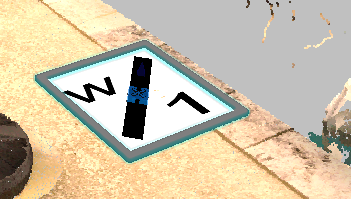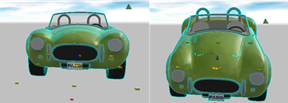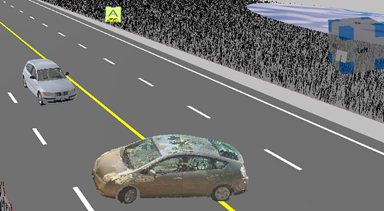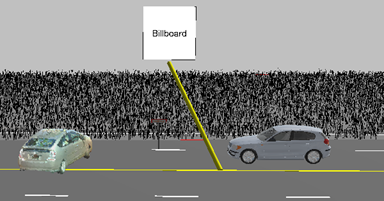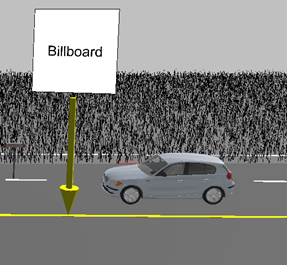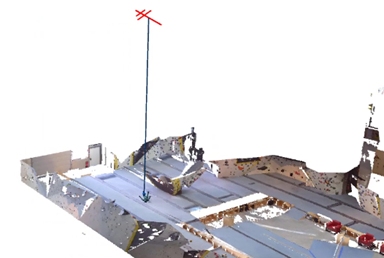Text
Use Text commands to add text-based elements to your drawing.
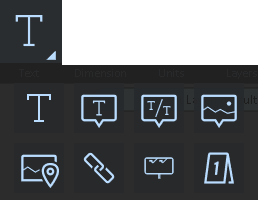
The following text elements are available:
 Text Label
Text Label
-
From the Home ribbon, click the Text drop-down arrow and select Text.
-
Move the cursor onto the diagram so the text label is visible.
-
Complete options in the Text panel.
-
Click Back.
-
Click the location in the diagram at which to place the text box.
-
Use the grips to make adjustments.
Text Tool Panel
Use the following options to configure the text:
Text - Type the desired text string. Use the Enter key to add multiple lines of text. For enhanced text editing options, click the paragraph symbol to the right of the Text field to open an editor.
X, Y, Z Values - Lists X, Y, Z values, which you can change by entering values or by using the dial arrows.
Yaw - Adjust the sideways position of the text box.
Pitch - Adjust the vertical facing position of the text box.
Roll - Rotate the text box.
Height - Adjust the height of the text box.
Arrow - Display an arrow. Select a color from the pallet.
Fill - Fill the background of the text box with a color. Select a color from the pallet.
Border - Add a border to the text box. Select a color from the pallet, and select whether to use rounded corners.
Settings - Select this option to modify the appearance of the text. Options are as follows:
Text Font - Choose the display font for the text.
Text Justification - Align the text in the box to the left, at the center, or to the right.
Stretch Text - Stretch the text string so that it fits the width of the text box.
Bold - Bold the text.
Italic - Italicize the text.
Underline - Underline the text.
Show Drop Shadow - Add a drop shadow to the text. Adjust the drop shadow by entering X and Y coordinates.
 Text Bubble
Text Bubble
Use a text bubble to label evidence, identify witness/photo locations, etc.
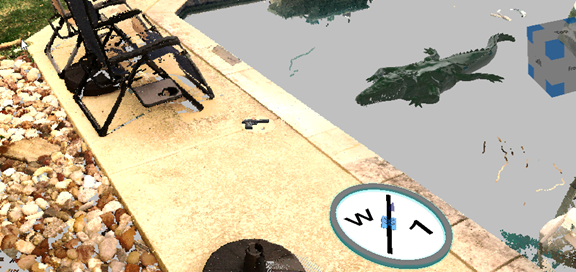
To create a text bubble:
-
On the Home ribbon, click the Text drop-down arrow.
-
Click Text Bubble.
-
Click the location in the diagram at which to place the text bubble. The first click sets the point of the arrow, move the cursor to the bubble placement location and click a second time.
-
Press Enter to add one text bubble, or use the 2-click process to add multiple text bubbles. Press Enter when you are done.
-
Configure options for the Bubble Label text box.
Bubble Label Tool Panel
 Color Color
|
Select the color of the text bubble. | |
| Text color | Select the color of the text. | |
 Layers Layers
|
Open the Layer Manager. | |
 Reset Reset
|
Reset the tool to its default settings. | |
| Text 1x | Enter the text to display on the top line. | |
| Text 2x | Enter the text to display on the bottom line. | |
| File or URL |
Browse to, and select a file or video, or paste a URL address. You can test the link by clicking Launch Link . |
|
| Bubble Size | Enter the size of the bubble box (in feet). | |
| Fill | Apply a color fill to the bubble. | |
| Arrow | Display or hide an arrow. | |
| Rectangle |
Change the bubble shape to a rectangle.
|
|
| Ignore Lighting | For the text bubble, ignore any lighting effects assigned to the drawing. | |
| Units | Select the unit of measure from the drop-down list, or leave the option at Automatic to use the default unit setting. | |
| Settings | ||
| Axes | Set the axes, and the yaw, pitch, and roll. | |
| Text Settings | Select the text control from the drop-down list. | |
| Font | Select the display font. | |
| Text Color | Select the text color. | |
| Bold | Bold the text. | |
| Italic | Italicize the text. | |
The following options are available:
Text 1x - Type the text for the top line.
Text 2x - Type the text for the bottom line. Numbers entered in the Text 2 field automatically increment for each new bubble.
 Bubble Picture
Bubble Picture
Use bubble pictures to add additional photos to the map image.
 File Reference
File Reference
Use File Reference to insert an image reference marker which you can double-click to display the image, rather than displaying the entire image in the drawing.
 Web Link
Web Link
Use the Web Link command to add a marker that includes an Internet link.
To insert a hyperlink:
-
On the Home ribbon, click the Text command drop-down arrow.
-
Click the Hyperlink command.
-
The Web Link tool panel opens.
-
Enter a name for the web link.
-
Enter the web address in the URL field.
-
Click the location in the drawing on which to place the marker.
-
Open the link by double-clicking the marker, test the marker by clicking Launch Link in the tool panel.
 Billboard
Billboard
Select any object, such as a text, symbol, or 3D model, and elevate it in the drawing so that it is always visible. This allows you to annotate the important parts of your drawing with any object type.
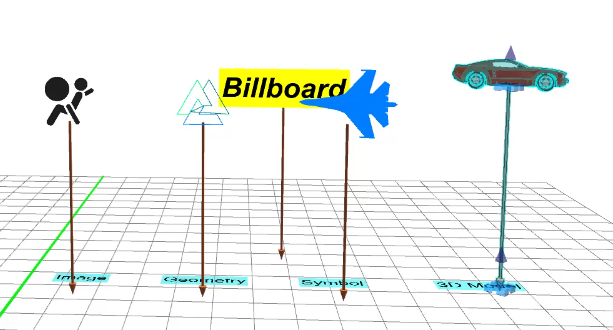
Billboards are also useful for identifying important subject areas in large images with terrain.
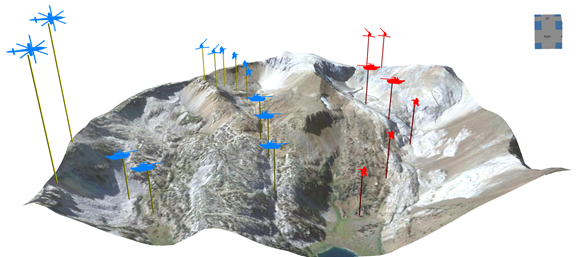
To apply the Billboard command to an object:
-
Select an object.
-
Right click the object and select the Billboard command (for symbols and models), or select the
 command from the Text dropdown.
command from the Text dropdown. -
Use the grip to adjust the height.
-
Click Edit Object to change the settings for the object selected as the billboard.
-
Make adjustments in the Billboard tool panel.
-
Add other billboards that you think are necessary to call out in the drawing.
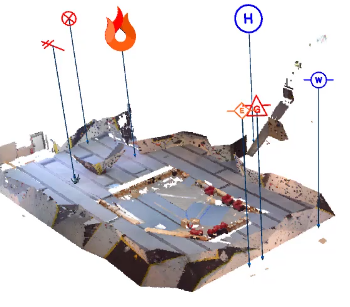
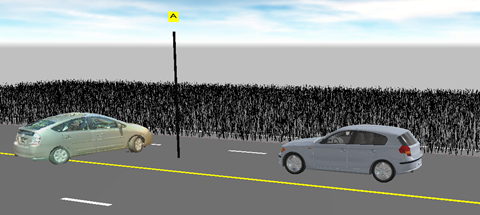
Billboard tool panel
 Layer Layer
|
Add the billboard to a new or existing layer. |
 Arrow and Pole color Arrow and Pole color
|
Use the color picker tool to select the color for the arrow and the pole. |
 Reset Reset
|
Reset the tool to its default settings. |
| X, Y, Z Values | Displays X, Y, Z values, which you can change by entering values, or by using the dial arrows. |
| Yaw, Pitch, Roll |
Adjust: Yaw Pitch
Roll
|
| Scale |
Adjust the size of the billboard. This is useful for sizing the billboard so that it displays clearly, depending on the size of your point cloud, map, or other aspects of the drawing. |
| Show Post |
Display or hide the post for the billboard. You can adjust the size and offset of the post.
|
| Post Vertical |
Enable this option to keep the post vertical under the billboard. Disable this option to offset the base of the post with the grip.
|
| Show Arrow |
Display an arrow at the base of the post.
|
| Post Length |
Adjust the length of the post.
|
 Evidence marker
Evidence marker
Use the Evidence marker tool to add an evidence marker to the diagram.
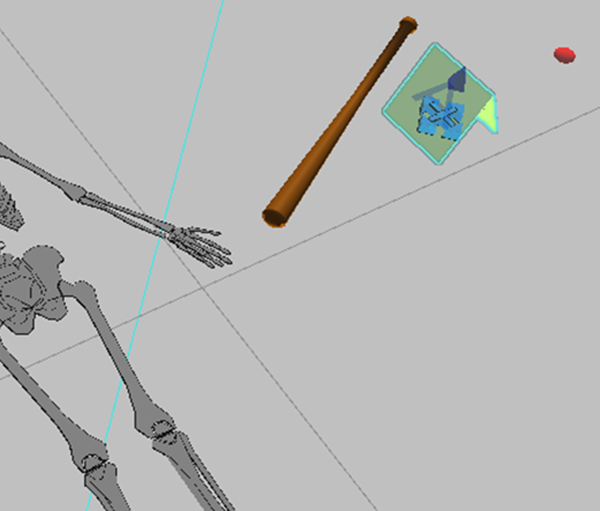
To insert an evidence marker:
-
On the Home ribbon, click the Text command drop-down arrow.
-
Click Evidence Marker.
-
Click the area in which to place the evidence marker.
-
Configure options in the Evidence Marker tool panel.
-
Use the grips to make positional/sizing adjustments.
Evidence Marker tool panel
| Text | Type the text to display in the evidence marker. Depending on the length of the text string, you may have to adjust the size of the evidence marker. |
| File or URL | Enter a file to open a file when the evidence marker is clicked, or enter a URL to open a web link. Select Launch Link to test the web link. |
| X, Y, Z Values | Displays X, Y, Z values, which you can change by entering values, or by using the dial arrows. |
| Length | Adjust the length. |
| Width | Adjust the width. |
| Height | Adjust the height. |
| Background color | Select a background color from the color palette. |
| Text color | Select the text color from the color palette. |
